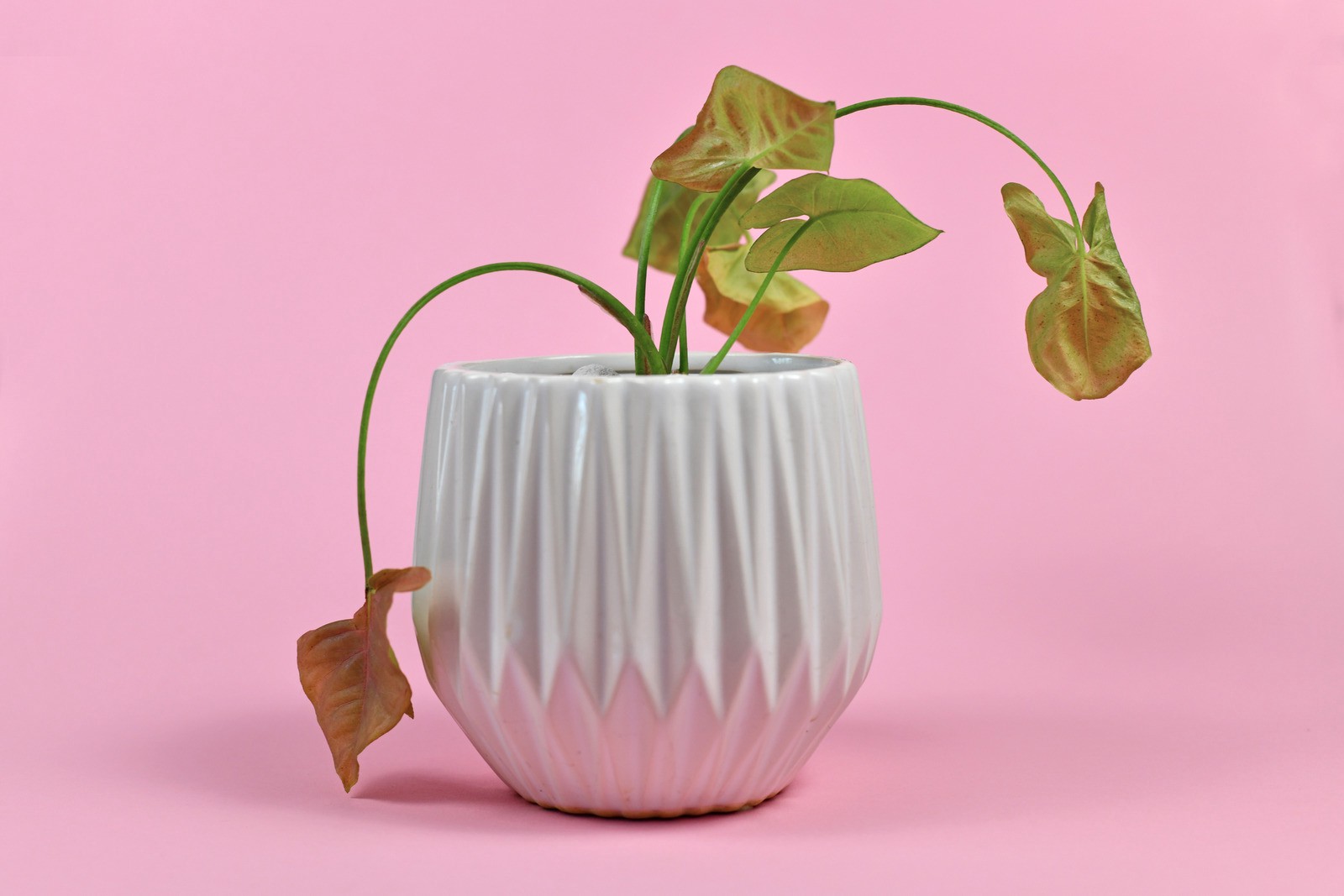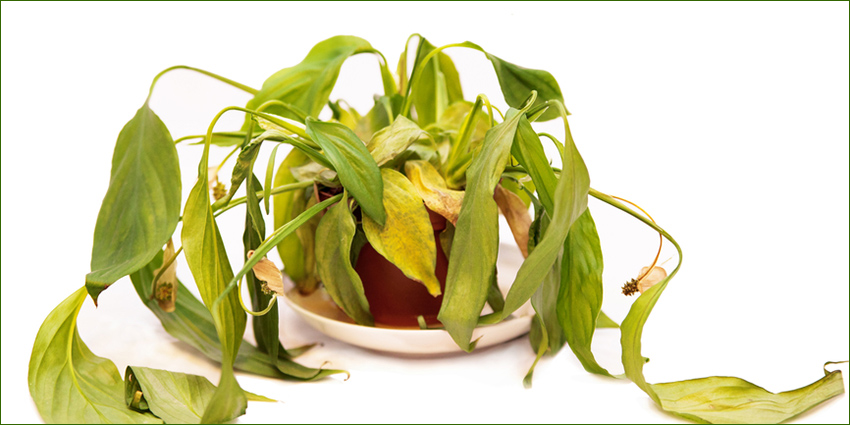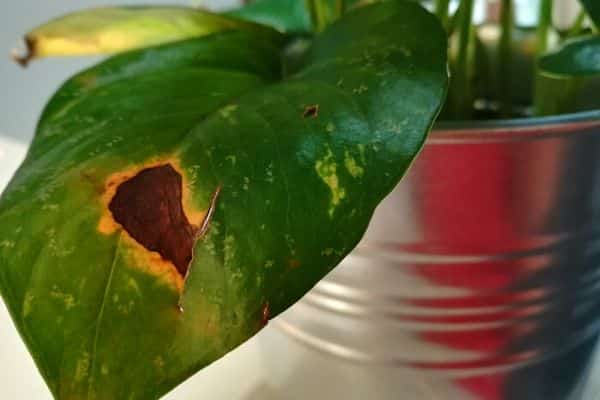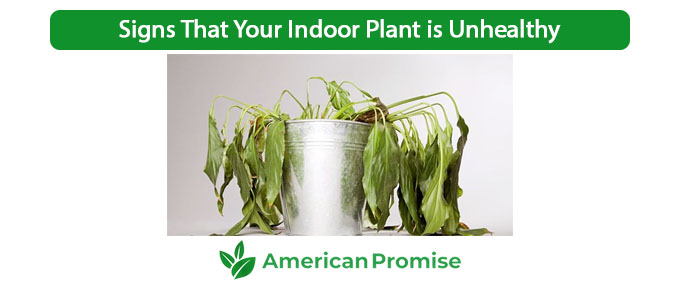We occasionally recommend products we love and might be paid a share of the sale.
If you are into growing plants then you know that keeping them alive could be quite a task at times. Nothing is sadder than caring about an indoor plant and seeing it die eventually. Indoor Plants are not quite hard to maintain because all they need is some periodic care. If your indoor plant is unhealthy then it is quite easy to understand that and that might help you save the plant from dying. Here we will be talking about all the different signs that your need to look out for to understand your plant is unhealthy. Keeping a lookout might help you save your indoor plants in their early stages.
-
Falling of the leaves
Leaves falling is something that is quite natural and happens to plants at times but it is also one of the most common signs that your plant is unhealthy. Most of the old leaves which are near the stem generally fall off over time. If you see that your plant is shedding leaves very often then you have to understand that it is unhealthy. There could be multiple reasons for multiple leaves falling from the tree regularly. If you can see new leaves growing healthily then the plant is not at all unhealthy.

-
Wilting of the plant
Wilting is quite common when it comes to growing indoor plants. The plants end up drooling towards the ground and cannot stand up on their own. This is generally caused when the indoor plant does not get enough water. When you see your indoor plant wilting then the first thing you need to do is check if the soil in the pot is dry or not. Checking is quite simple in this case. All you need to do is take two fingers and stick them inside the soil. If you cannot feel the moisture in the soil then you will know that the plant is dehydrated.
If the plant is dehydrated then there are a few things that you need to do. Watering a plant with water can be effective but it will surely take some time. You can simply make some holes in the bottom of the pot and put it in a tray of water. This step is quite effective and the soil will surely absorb water faster. Make sure you don’t keep the plant in the water for a long time or else it will end up making the roots soggy.
Make sure you water the plant once every week going forward to make sure that the soil has moisture in it. If you keep your plant in direct sunlight then that might be the reason for all the water getting evaporated. You can try moving the plant to a place where it gets indirect sunlight.
This is also quite a popular problem seen in all indoor plants. Once you see your indoor plant leaves are turning yellow you can be sure that your plant is unhealthy. There could be multiple reasons for the leaves turning yellow and some of the most common reasons are under watering or overwatering of the plant. You will have to check if the soil is dry or wet. If the soil is dry then watering it regularly is the best possible remedy. If the soil is wet then the main reason might be proper drainage. Make sure that there are holes at the bottom of the pot to drain out the excess water.

Leaves often turn yellow in indoor plants when there is no proper sunlight. Without sunlight, the plants are not able to photosynthesize enough so the green leaves end up getting yellow. The easiest solution is to keep the plant in a place where it will have access to sunlight. Once you see the yellowing of the leaves make sure to take extra care of the plant or else it will eventually end up dying. If after all these the leaves still get yellow to consider changing the soil or adding compost to it. Make sure to use a spray gun to water the leaves regularly to keep them clean and fresh.
-
Scorched Leaves
This is an issue that is typical to indoor plants which do not require direct sunlight. Placing indoor plants directly in the sun is not a good idea and you will be able to see that when the leaves get discolored. Too much sunlight will burn the color of the leaves and dry out the soil. If you see your indoor plants with scorched leaves make sure you keep the plant away from direct sunlight.
The moisture of the soil will also get dried up in the sunlight so regularly water the soil to bring it back to its real condition. Make sure you follow the watering routine of your indoor plant. If you have no idea about the watering routine make sure you do proper research because the watering routine changes from plant to plant.
-
Brown Leaves
If you see most of the tips of the leaves turning brown then it is very much evident that your indoor plant is not at all healthy. The main reason why this happens is root rot. Root rot happens when the plant is overwatered and the roots are always underwater and they end up becoming soggy. The excess amount of water causes a disease in the roots. The disease is caused because of a fungus that is ideal for wet conditions. The fungus does not allow the roots to absorb nutrients from the soil making the leaves dry and brown.
It is quite hard to save the plant when something like this happens but there are things which you could try to save the indoor plant. The main focus here should be to keep the soil dry. Make sure there is proper drainage in the pot.
Make sure you don’t water quite a lot. Make sure you water the plant only when it is necessary. It is suggested that you pull the soil around the plant back so that the roots end up getting dried faster. Adding pests to the soil is also a solution for making sure that the fungus is not able to grow faster in the roots.
-
Few Flowers and excessive foliage
If you see that your indoor plant has few flowers and an excess amount of foliage then you can be sure that it is unhealthy. The main reason for this happening is because of too much fertilizer containing nitrogen on the soil. Fertilizers are good for the plants but if you end up adding a lot of it then that might cause a lot of trouble. Most indoor plants available need to be fertilized once every month. Make sure you make a schedule and fertilize accordingly. Add less nitrogen fertilizer and you will surely see a lot of difference.
-
Spots on Leaves
Whenever you see spots on leaves your indoor plant cannot be healthy because all the spots are caused because of fungus. If you have an indoor plant that is already affected by this fungus then make sure you isolate the plant from your other plants or else all the plants in your home will end up catching the same virus.

Make sure you do not spot the leaves when watering them and also increase the air circulation by keeping them in an open space. Water spots are quite easy to get rid of. The hardest part is getting rid of the fungus. There is nothing you could do to save the plant. You can take extra care of the indoor plant and keep it isolated.
-
White clusters on the leaves
This is something quite common in all unhealthy plants. All the white clusters are most likely mealybugs or common pests. It is important that you treat the problem at the initial stages or else it will be impossible to save the indoor plant. Mealybugs can cause some serious damage to indoor plants.
Curing the plant is possible but is a bit complicated. When the cochineal appears in the leaves make sure you remove all the shells with the help of a cloth that is soaked in beer, alcohol, and soapy water. There is anti-cochineal products available which you need to use on the plant to save it. In such an attack a spray based on nettle manure is quite effective in the event of an attack.
Conclusion
Growing an indoor plant is quite an achievement and it surely looks great inside the house. It is not always easy to grow indoor plants because they need a lot of attention. It is important to give extra attention to the plants so that you can figure out all the signs if the plant is unhealthy. If you are facing some issues with the plant then make sure you read this article carefully and figure out if your plant is healthy or not. Most unhealthy plants can be brought to life with some care and love. All you need to do is give them attention when they need it.
A rotating team of writers and editors dedicated to providing reliable information for the readers of American Promise. We’re all passionate about cannabis and actively engaged in this “budding” industry.
Contents

